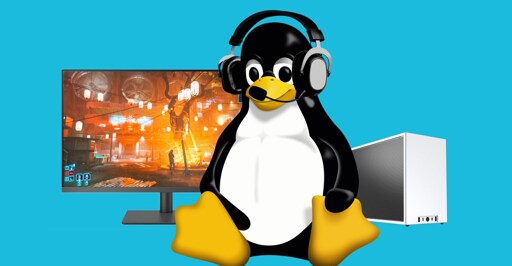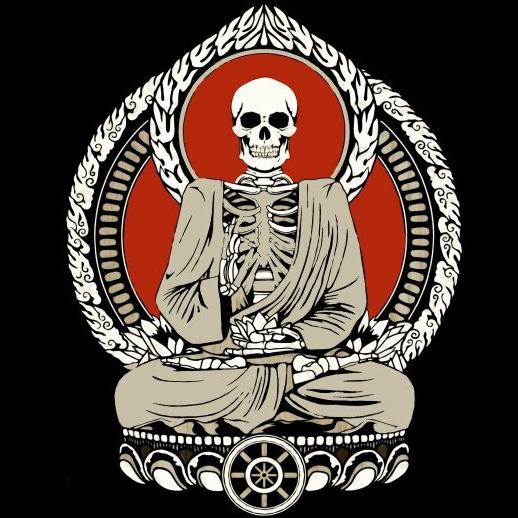- cross-posted to:
- [email protected]
- [email protected]
- cross-posted to:
- [email protected]
- [email protected]
Me after using the KDE: how the fuck Linux is better Windows than Windows?
They were supposed to focus on window managing, ITS IN THEIR FUCKING NAME. Instead you need extra things like Powertoys for basic functions that KDE has integrated.
KDE is the best desktop environment I’ve ever had the pleasure of using. So much better than Windows at everything I want out of my desktop!
The only thing that sucks about switching to linux is moving my external NTFS USB drives to my new linux server.
Linux HATES NTFS, hates usb drivers, and hates external drives that aren’t formatted to ext4. fstab doesn’t work for my WD Elements, so i just gave up and shucked the drive and put it inside.
I can’t fit 5 3.5" hard drives in my SFF dell 3070, so i’m stuck on windows right now, but they keep doing random updates the last few weeks and my windows explorer freezes constantly and my computer barely works. So i’m going to have to switch to linux and possibly reformat all 36TB’s to ext4. Not excited about that at all.
So either reformat all my external drives, buy a very expensive NAS with an external SATA port and hope my motherboard recognizes them.
Eh? I’ve never had a problem with reading NTFS drives in linux, including USB sticks and SATA/USB adapters. Are you just wanting to read them or use them as read/write? Write is a bit more tricky, requiring ntfs-3g, but most reasonable distros come with that nowadays.
Yeah, you will generally have a better time with exFAT, which is a format both Windows and Linux works with well. All my external drives get formatted as such.
Just be forewarned:
Nvidia requires a bit of work.
SeLinux….it is a giant bag of gotcha.
That all said I’m not regretting my conversion.
I use Linux Mint and Nvidea and never had any problem what so ever with it. But maybe i just have been lucky.
I use Linux Mint and Nvidea and never had any problem what so ever with it. But maybe i just have been lucky.
I use Linux Mint and Nvidea and never had any problem what so ever with it. But maybe i just have been lucky.
Me no use Mint, but the only problem I get is the sleep bug (waking from sleep results in a black screen). I’ve looked into it a few times and all I can assume is it’s probably nvidia so I gave up on solution hunting and pray one day it’s fixed (it’s getting slightly better over the years or maybe thats a placebo idk, it seems to fully break quite rarely now).
After my pc sleeps I usually have to switch sessions with ctrl+alt+<fn key> then back to the one running KDE and it (nvidia?) revives itself and I can keep working on watching my movies.
Just sharing my experience because mby someone smart here is thinking “yo yur dumb just do this”, but honest it’s not a big deal for me anymore.
Oh wait I wanna add that apart from this (tiny in my opinion) bug, everything esle has been smooth, even some gaming (it’s possible im in a rare state to be getting this bug since I haven’t reinstalled my root partition in like 5+ years, even tho I have swapped distros a couple times).
Yeah, really do it ok? Not only are you helping yourself, you’re helping everyone by shoving it up the clueless execs at microsoft who still have no idea why people dislike their stupid spy AI thingy.
Best desktop in the world, no joke.
*Least terrible
If yours is terrible then that’s a skill issue tbh
Being fanboy elitist is not helping. In fact it’s cringe. Don’t be cringe.
I will remind you : Nvidia is not easy on Linux. And so far as my research it never has.
Windows you don’t have to think about it.
That said, there is good help on it.
So help.
Be part of the solution. Not the problem. And especially don’t be another problem.
Windows you don’t have to think about it.
To be fair, that’s only because most people are trained on windows first and use it for decades, so the annoying Windows quirks and defects have been embedded into you (their workarounds too).
Nvidia is not easy on Linux
I think this problem is mostly solved, for newer cards at least. But I guess I have to agree since older nvidia gpus will be stuck on the terrible old proprietary drivers (though idk maybe the older ones have better support because theyve been around).
It is terrible indeed, but I’d rather say that is because linux development is not focused enough on the desktop. KDE does a decent job out of the box, but still cracks in too many corners (still, after so many years…). GNOME looks cool but has terrible usability. People praise it for its design, but none of those people are designers or have any idea about design beyond color combinations. I know, your obscure other window manager is great and I will try it out soon.
I’m a bit optimistic that things will get better eventually. We have a decent service manager now and half-standardized packaging solutions. It also seems like the biggest pain with X vs. Wayland is over. Things kind of work, but it’s far from a good desktop experience.
Terrible still, but dude I’m happy I’m over here and not in one of the other camps right now.
deleted by creator
“Tech journalists” installing linux in 2025 like it’s this hot new tech is not exactly the early adoptership I’d expect from them :)
Every time anyone rejects Microsoft’s shitty bloatware/spyware it’s a win. I just converted a few months ago. Win11 is going to push more and more people away.
Ive been getting a taste of linux setting up a few raspberry Pis. Its been really fun and it got me looking at installing a linux distro on my PC. Probably ubuntu or ive heard good things about mint.
If you have amd in your system mint is a pretty great choice.
Gaming on Linux has gotten way better than what is was a few years ago.
I was blown away by it. Just install steam and maybe proton-ge and good to go. I recently installed CachyOS and that way I even skipped the driver install chore I usually had to do. Anno 117 just works out of the box. It has gotten so good and easy!
GeForce app for some cloud gaming on Anti-cheat and that’s a wrap. I don’t need anything else now.
Nice to see others get it, 22 years after I got it, even if it did take a hella load more egregious malware impositions.
Gee, very encouraging of you.
They use Arch, btw
First of all I didn’t say exponential, only you did. Second, the majority of those 3% came in the last few years. So say 1% in 30 years, 2% more in like 4. Sound exponential yet?
🤞pleasejustpickbazzite pleasejustpickbazzite pleasejustpickbazzite🤞
I’m going to install CachyOS, an Arch-based distro
oh god dammit
Everyone uses their computer differently and you’re binded by the distro that provides.
Sometimes I feel like I have to physically pull people away from things they aren’t going to like. Everyone wants to learn how to drive a semi with a b-train, but they should be starting on the good old reliable Camry.
It’ll be nice when we learn to downvote distro shills into oblivion.
Bazzite is much worse for a new user then cachy. Worse documentation and a load of quirks from being immutable.
Frankly they would be better off with mint unless they need very up to date hardware support for like a laptop.
I installed CachyOS for a weekend and it’s now been several months. I love it.
But I would never, ever recommend it to a new user. It still requires someone to be comfortable on the command line and it’s possible to break it if you don’t know what you’re doing.
Bazzite just works. You install it and start logging into your accounts. It’s nearly impossible for a newcomer to break, and perfect for the vast majority of new Linux users.
Recommending Cachy to new users hurts not only those users but the entire Linux ecosystem.
I don’t recommend Mint, either, but only because I am a KDE cultist, I hate Cinnamon, and every time I’ve tried it on anything I’ve had frustrating hardware issues that I have never had on Fedora.
I’m BlameTheAntifa and I have a distro-hopping addiction.
I’m BlameTheAntifa and I have a distro-hopping addiction.
“Hi, BlameTheAntifa.” The circle of disto-hoppers echos.
Huh, I’ve been running Mint for a couple of years now and the only thing I have had it not talk to was an obsolete audio interface.
Bazzite is good for people who break their computer constantly because it’s harder to break. Cachy is better for people who can be trusted with sudo
This. I mained Arch for 2 years and still can’t be completely trusted with sudo. Moved to Nobara, would recommend as well. Its a bit more advanced, but you don’t have to touch the command line if you don’t want to and setup is right there step-by-step when you first boot.
I did try Bazzite first. I just couldn’t get used to living the Flatpak life. I know you can force install native packages, but at that point why wouldn’t I just use Nobara, lol.
Drag tried Bazzite last year and hated it for the same reason as you. Now drag’s on Cachy and loves it. Drag did accidentally break the swap file entry in fstab and dealt with months of slow booting and freezing, but drag accepts that as drag’s own fault and fixed it. If a user is good natured about fucking their computer up with sudo, cachy is a great OS, and most users won’t even do anything complicated enough to risk breaking their computer that bad. Bazzite is for users who can’t fix it or won’t accept it when they do something stupid with sudo.
I agree. Too much handholding for me, imo. However, if I had a Steamdeck I might use it just for simplicity sake. If I wanted an immutable distro for my desktop I’d choose NixOS, tbh, but that’s on the opposite end of the complexity spectrum from Bazzite.
Cachy’s not that bad for beginners. I just did a test install on an old Nvidia PC, and it works for gaming OOTB.
We’ve come a looooong way from Manjaro. I wouldn’t wish Manjaro on my worst enemy, to be clear.
I haven’t used Manjaro in many many years, but IIRC it was the first distro I used that reliably supported Wi-Fi.
I’M FED UP, GOING TO INSTALL LINUX!
- picks a complicated distro where you really need to read the manual or do some heavy google searches to do gaming *
I’M FED UP, THIS IS TOO HARD, I’M GOING BACK TO WINDOWS!
Cachy is one of the easiest distros to use
For real, it is 100% arch done “the right way” with sane defaults and thoughtful optimizations. Made the switch a few months back and hadn’t looked back. CachyOS is a wonderful project.
Every. Single. Time.
Not really…
If you want to use arch for the first time use an already setup distro like Manjaro.
Cachy is a better starting point then Manjaro. Manjaro gets funky.
Honestly, Day 1’ers, I’d rather they run Debian, Mint, Ubuntu, or Fedora. There are strong communities that are noob friendly. Go ahead and install Steam, get some games working, get their feet wet. 99% of the time, they don’t need more than basic stuff. Once they’re over being afraid of not being in windows, then start distro hopping to whatever they want.
This is exactly right. It’s a journey, not a race.
I can really suggest Mint for beginners simply because it has an UI for about everything you need somewhat regularly. This means, that you can use GUIs to get familiar and aren’t forced to know your way around the terminal. Its the Ideal beginner Distros (at least from my experience)
AntiX for same reason.
Idk, i really disliked the UI and especially the application launcher.
That’s exactly it though. For most people using an OS isn’t about using the OS but about getting stuff done.
I don’t run an OS because I love writing config files and running obscure CLI commands. I run an OS because I want a working browser, text editor, development setup and games. The OS is nothing but a means to an end.
If I want to tinker, I got dozens of more fun projects in my life than trying to setup an OS.
And if there’s a good GUI way to do what I need, that’s a win, not a downside.
To put it differently: Do you want a hackable microwave that you can tweak and modify, where you can swap out the guts at any time, or do you want a microwave that heats your food? Most people are in the second camp, and PCs are just like microwaves a tool to get things done.
Not being forced to know your way around the terminal is an absolute win. Don’t be afraid, nobody’s going to take your CLI from you. It will always still exist. But dumping on people who don’t want to tinker but want their stuff to work without having to google and read through manuals is just elitism and nothing to be proud of.
Another good reason for having GUIs is, that you can learn the CLI while not being dependant on it.
KDE Neon ftw
I disagree. If you want to use Arch for the first time, install it the Arch way. It’s going to be hard, and that’s the point. Arch will need manual intervention at some point, and you’ll be expected to fix it.
If you use something like Manjaro or CachyOS, you’ll look up commands online and maybe it’ll work, but it might not. There’s a decent chance you’ll break something, and you’ll get mad.
Arch expects you to take responsibility for your system, and going through the official install process shows you can do that. Once you get through that once, go ahead and use an installer or fork. You know where to find documentation when something inevitably breaks, so you’re good to go.
If you’re unwilling to do the Arch install process but still want a rolling release, consider OpenSUSE Tumbleweed. It’s the trunk for several projects, some of them commercial, so you’re getting a lot of professional eyeballs on it. There’s a test suite any change needs to pass, and I’ve seen plenty of cases where they hold off on a change because a test fails. And when it does fail (and it probably will), you just
snapper rollbackand wait a few days. The community isn’t as big as other distros, so I don’t recommend it for a first distro, but they’re also not nearly as impatient as Arch forums.Arch is a great distro, I used it for a few years without any major issues, but I did need to intervene several times. I’ve been on Tumbleweed about as long and I’ve only had to
snapper rollbacka few times, and that was the extent of the intervention.Learning is good.
I know someone who after years of being told about gentoo, still refused to use the handbook to install it, had someone else install it for them, and gave up after a few months… recently revealed he thought it was a text only operating system. XD
Learning is good.
RTFM! :)
Exactly.
There’s a difference between gatekeeping and being transparent about what’s expected. I’m not suggesting people do it the hard way as some kind of hazing ritual, but because there’s a lot of practical value to maintaining your system there. Arch is simple, and their definition of simple means the devs aren’t going to do a ton for you outside of providing good documentation. If your system breaks, that’s on you, and it’s on you to fix it.
If reading through the docs isn’t your first instinct when something goes wrong, you’ll probably have a better experience with something else. There are plenty of other distros that will let you offload a large amount of that responsibility, and that’s the right choice for most people because most people don’t want to mess with their system, they want to use it.
Again, it’s not gatekeeping. I’m happy to help anyone work through the install process. I won’t do it for you, but I’ll answer any questions you might have by showing you where in the docs it is.
I agree… I went with arch because I like rolling release but wanted to force myself to learn how things work. Anymore, arch has just as much chance of breaking as any other distro, fairly low honestly. It does however have the most detailed documentation and resources available.
Now on CachyOs cause it’s quicker to setup and the team behind it is so damn on top of getting issues fixed asap.
Yes, Arch is really stable and has been for about 10 years. In fact, I started using Arch just before they became really stable (the /usr merge), and stuck with it for a few years after. It’s a fantastic distro! If openSUSE Tumbleweed stopped working for me, I’d probably go back to Arch. I ran it on multiple systems, and my main reason for switching is I wanted something with a stable release cycle for servers and rolling on desktop so I can use the same tools on both.
It has fantastic documentation, true, but most likely a new user isn’t going to go there, they’ll go to a forum post from a year ago and change something important. The whole point of going through the Arch install process is to force you to get familiar with the documentation. It’s really not that hard, and after the first install (which took a couple hours), the second took like 20 min. I learned far more in that initial install than I did in the 3-ish years I’d used other distros before trying Arch.
CachyOS being easy to setup defeats the whole purpose since users won’t get familiar with the wiki. By all means, go install CachyOS immediately after the Arch install, buy so yourself a favor and go through it. You’ll understand everything from the boot process to managing system services so much better.
Yeah, there are many people that just want the system to work and not have to become full time geeks like some of us are. There are also plenty of distros, atomic or not, that provide that experience. Perfect match. There’s a distro for everyone, from anti-tech people to full blown rocket scientists.
I 100% agree. If you want the Arch experience, you should have the full Arch experience IMO, and that includes the installation process. I don’t mean this in a gatekeepy way, I just mean that’s the target audience and that’s what the distro is expecting.
For a new user, I just cannot recommend Arch because, chances are, that’s not what they actually want. Most new users want to customize stuff, and you can do that with pretty much every distro.
For new users, I recommend Debian, Mint, or Fedora. They’re release based, which is what you want when starting out so stuff doesn’t change on you, and they have vibrant communities. After using it for a year or two, you’ll figure out what you don’t like about the distro and can pick something else.
Are you looking for fellow Bazzite users? (I’m one of them)
Good to meet you brother/sister! We walk a rather lonesome road but glad I stand alongside you
I’m standing slightly to the left of you.
CachyOS has been flawless on my S/O’s desktop. From an easy install to plenty of documentation available, I couldn’t have asked for much more. During install, there’s an entire step dedicated to checking a box if you want to play games. (To enable non-free drivers).
I don’t think it was a poor choice.
Flawless wouldn’t require any documentation.
There are instructions on your McDonalds coffee that say, “This coffee is hot.”
You might feel as though no documentation is necessary here, but clearly it was a critical miss for someone.
Are you saying McDonalds Coffee is flawless?
Non, monsieur. He is saying that any prosuct, whether flawless or not, must have proper information about it, since we are not born knowing how to use Windows, either.
Yeah, a lady got third degree vagina burns and a fused labia from McDonald’s coffee. She needed surgery and skin grafts. She sued them and asked for her surgery bills paid, but the judge noticed that McDonald’s had already got a lot of complaints about serving dangerously hot coffee, and he decided to award her one full day’s worth of profits to teach them a lesson.
Everything requires some documentation.
They didn’t say it required documentation, they said it had plenty of documentation should you need it.
And I’m telling you to grab a dictionary and lookup what flawless means
Damnit, you’re right!

But for real, I think you misunderstand the point of documentation. Even if something were truly, literally flawless, having documentation would still be a net gain. It isn’t only to fix something when it goes wrong, but explains how things are working. If the only way for something to be literally flawless in your world view is for it to be so self explanatory that an idiot seeing it for the first time still understands it perfectly, nothing in computing can be flawless in that way.
The pedantry on this point is so unhelpful as to be actively harmful to the rest of the discussion.
Just a heads up- You appear to be interpreting things in a strictly literal sense.
Some people might view this as trolling.
That’s so passive aggressive it’s impressive.
I distro hop regularly, still have to see that one ‘flawless’ distro, or system for that matter.
Agree.
As a veteran geek but absolute Linux noob, can you explain a bit the differences of Bazzite vs Mint? Just recently installed Mint on an old laptop, and it went quite smoothly… But the real test will be my plex server!
Mint is Ubuntu/Debian based and uses their Cinnamon desktop environment.
Bazzite is Fedora based and uses KDE as the desktop environment.
The biggest difference is that Bazzite is atomic or immutable distro. The core systems are read only so it’s harder to break. It’s also harder to tinker with. You’re mostly limited to packages that are available in their package manager. You can install other stuff via layering if you really need to tinker.
Just went from Bazzite to Steam OS on my TV PC. It’s a little less flexible but I don’t use desktop mode for much on the TV or want to install anything outside a few emulators and external game launchers. I’ve had too many updating issues with Bazzite over the years. The recent deal breaker was sunshine broke preventing it from updating.
Oh man, don’t read the comments, sad to see the smartasses saying “report back when you install windows again in two months” while getting utterly fucked by Windows.
I mean, I understand being resistant to change but being a fanatic of Windows or anything for that matter just because that’s all you know is really ignorant, it’s not a sports team for fucks sake, of course it’s not easy switching and you will have problems just dont be afraid to ask and read the error warning.
Rant over
I use Windows for work and I miss Win10, I don’t like it but I’m aware that’s currently the target of most Consumer SW for good reason but that reason is starting to break (say it with me! BAD BUSINESS DECISIONS!!!).
Happy to see Linux getting mainstream, not all comments are bad but I the trolls got me.
It kind of reminds me of the whole Rust situation in a way. The evangelists were so heavy-handed that an active counter-movement developed, and with the adoption being wider the fanatics are heard less and what remains is their counterpart. We certainly aren’t quite there yet with the Linux discussion, but it seems to be what we’re heading towards.
I will say, I have very low hopes for this person sticking with Linux because they made a big deal about switching to it.
They’re going to feel like they need to continuously justify their decision as they’re learning, which will magnify the demoralization of every problem he encounters.
And he will encounter problems.
It’s like do-gooder derogation. ( https://en.wikipedia.org/wiki/Do-gooder_derogation )
Someone doing something good? Fuck them. They think they’re better than us?? Where do they get off??!?
A lot of people are trash and are emotionally invested in both the way things currently are, and that they are a very good person
TIL there’s a name for this
There’s a name for everything. There’s probably a name for there being a name for everything.
Panominism.
(edit: I made this up, probably.)
It’s regedit!
Well, if you honestly think about it, Linux has always been tried by many of people that eventually went back to Windows because something wasn’t entirely straightforward. Don’t get me wrong, I love Linux, but I don’t blame people for thinking that. Trying Linux is very different than sticking to it. Linux is amazing OS for people who put at least some effort into learning it, but like it or not, it can be absolute pain for those expecting things to just work without any interest on why they experiencing issues. Given how many sets of hardware and peripherals people have, weird quirks, bugs and required workarounds aren’t unheard of. Maybe it’s just something very simple to fix for an advanced user, but normies will just run away.
expecting
There’s the key flaw.
Maybe if we kept speaking of Free Software philosophy, people would not have these misplaced expectations they’ve been conditioned to as dis-empowered consumer cash-cows of the monopoly.
As someone who tried it for a few months then switched back for several years before returning permanently two years ago: Linux has long had the problem that it’s completely ready for different people at different times.
In 2017 it was in pretty good shape if you weren’t a gamer, didn’t mind tinkering a fair bit, were prepared to learn a completely different two ways of installing software, and didn’t rely on proprietary apps (I couldn’t get Netflix to work). I was only ready for the tinkering. Also I’d used Ubuntu and gnome just added more changes.
Five years later a lot had changed. I wasn’t using Netflix (especially not in the app) for one. But Proton had come around and made gaming just work. My wifi drivers just worked unlike before. Years of mobile app stores and a few months of lemmy had prepared me for repos, even though it still took some getting the hang of to switch from just downloading and double clicking an exe file. But also the software options are increasingly available rather than having to learn to use old school wine while in the middle of a massive change. I still think I should switch away from garuda at some point as I dislike some of the choices it made (no flatpak support for one), but I love aspects of it. And all throughout that time that Linux was getting more accessible to someone like me who isn’t a coder, but was tech nerd curious, windows was increasingly getting in my way and becoming anti user.
I think adoption will continue to increase as Linux continues to get easier for more people
Garuda was a great distro for a hot minute. It was right where it needed to be to access Steam on Linux right as the Steam Deck came to market. It got all the performance benefits of Proton immediately as other distros had to play catch-up.
It still is a great distro, but it’s lost some is that exclusivity.
I love the eyebleed aesthetic of it I’m just now skilled enough to get that on something like fedora or Debian. And these days what I want is for more things to work easier which puts me out of the arch sphere. If garuda hadn’t committed hard to the aur I’d probably love it but the aur does everything 3 ways 1 of which may still be maintained and it leaves you just wanting the actively maintained flatpak.
Like I don’t hate it, it was the right distro at the time for me as it was noob friendly and had plasma 6 when few others did. But I don’t need the bleeding edge anymore.
I appreciate that arch’s package manager is a bit of a monster - but that’s also what made it the prefect choice for me.
In the immediate aftermath of the release of the Steam Deck, there was many hot weeks where arch’s ability to turn on a dime was exactly the tool needed to run all the new things valve released (fast development to deploy is aur’s specialty). This advantage was destined to not last more than 6 months, as that’s the release cycle for other distros.
Nothing prevents ya from using Arch to install Flatpack, tho. It’s also really well documented at https://wiki.archlinux.org/title/Flatpak 😅
it can be absolute pain for those expecting things to just work without any interest on why they experiencing issues.
I think that describes computers.
Windows does the same thing, only worse because it is harder to trouble shoot, and harder to fix if you find yourself at the point where a reinstall is the only way out.
I am dealing with a laptop like that now for someone else, and it would be simple if it was linux, but of course its a pain in the ass because its windows.
I must say on mine laptop it took fewer tries to have Linux mint working. When I was installing the Nvidia drivers I was losing the WiFi ones and couldn’t do anything to fix without internet there
So after some reinstalls I learned I need to update mint first, than do the Nvidia update, this did the trick for me.
it can be absolute pain for those expecting things to just work
Linux Mint just worked.
it can be absolute pain for those expecting things to just work
Which is like 95% of people.
Imagine if cars worked this way. Imagine you needed to be a mechanic to operate your vehicle. To start and drive your car, you first have to do automotive work, and know how to do automotive work.
A lot less people would drive themselves. A lot more Ubers.
I mean that’s exactly how cars were for the first ~50 years they existed.
Fits with the recently announced 5% Linux use.
Maybe eventually people will increasingly realize the folly of this expecation.
Maybe even “AI” atrophying their skills will wake people up to this problem, right through to no longer wanting to be consumer cash-cows of the monopolistic corporation.
Convenience, so sweet, in the short term. Maybe eventually people will learn, the sweeter the juice, the more dangerous the pitcher plant. And then people will learn to drive. And to be able to mend their own. And stop buying the ones that make it difficult to mend. Seeing the folly of such dis-empowerment.
*Dreamer*
Wait what? Hahaha, it is only a problem when things don’t work. Same with cars, as in your analogy, if your car is not starting your are taking that Uber…
You don’t need to be a mechanic, but you need to know the lights in your panel, know how to check the oil, know how to change a tire, etc… For when things go wrong and maybe you can repair what’s needed yourself.
Bringing it back to Linux, you can try Linux directly from a USB without installing anything and most of the time it just works. If gradma is only reading the news or watching youtube she doesn’t care what OS it is.
I’ve been using Linux as my daily driver for over a month. The only thing I miss are some old windows apps that I’m too lazy to troubleshoot in Wine.
I’m too lazy to troubleshoot in Wine.
I’ve been daily driving Linux for about 3 years now and one major tip I can give is to avoid using non Linux apps as far as possible. When I started with Linux I also tried to get windows apps running on Linux, but this, at least as far as I remember, never worked the way I wanted ans always caused more troubles. Currently I’m at a point where I dont even know when I used plain wine (I am not counting proton) the last time. It has been 2 years at least. I Am using native Linux apps for everything I do. Much less trouble shooting, no need to learn wine additionally to the command line and much less prone to breaking because of an update.
Yup. I’ve been daily driving linux for about 22 years now, and seeking solutions to what I want to accomplish was[/is] a much more enjoyable exploration than trying to wrestle the square peg in the star shaped hole.
It’s the free software (free as in freedom), not the “can I get this proprietary software for windows to run in linux”. Best to understand this and make that leap. Then life gets so much better. The more of your software that affords you (and everybody) the 4 freedoms of free software, the better.
This is the right approach but IF you must and IF you have decent computer, try Winboat
What if you run windows apps through proton
Havent done that (except for games ofc)
Who knows, maybe Autodesk will finally start thinking about Linux.
They already use Qt anyway, so the .NET part is all they’d need to fix.There’s Mono. I don’t know what portion of .NET compatibility issues that addresses in 2025.
Well of course, there’s probably other Windows stuff they are also using, considering how much they aren’t even trying to ship for something like Ubuntu, which would be super easy otherwise.
I can only imagine how big of a push Autodesk can easily put towards Linux. That would easily make the current rise to 5% be nothing in comparison. Maybe MS is paying them too, to keep them together.
Of course it might also just be that MS makes it easier for them to setup a DRM (Digital Rights Management) as compared to Linux, not that it matters considering how much they have been pirated.
Then there was this person who was not using Linux because of the CAD software he wanted to use and when I asked what exactly it was, he said, “KiCad”[1].
it’s available in Arch and Debian official repositories ↩︎
KiCAD is available for most distros. You can even get it via flatpak
Yeah, so you see, they just don’t know that the stuff is available.
They are also the types to download from stuff like Softonic/MegaUpload etc. when the official website has downloads available, so even if the website were to advertise Linux availability, they would never end up seeing it.
I mean, I understand being resistant to change but being a fanatic of Windows or anything for that matter just because that’s all you know is really ignorant
I’m suspecting around 80% of the people who switched to Linux after Win11/AI stuff, will switch back within 6 months.
I’m saying this as a Linux user.
I’m still going strong two years later! :D
Yes and that’s ok, but the comment you tagged is about the people just shitting on linux without even trying it, they are kind of Windows hooligans.
The top comments don’t look too bad now… Maybe they’re ranked differently or something
they removed the comment section now 😅
I don’t see them as trolls. I’ve been on ZorinOS for about a year now. I hate it because I don’t know how to do anything, but I’m not smart enough to learn terminal.
Flatpaks are the answer to installation. But any problem I have, I google, and every result starts the same way.
"Ok, Step 1, open terminal
NOOOOOOOOOOOO!!!
I have a 100% rate of those solutions not working for me. And the reason is simple. Those solutions assume you know how to use linux. So when you copy and paste their terminal commands, and your terminal responds with error: dependancies not found, YOU know how to fix that error and it works for you. But for most regular people, thats the end of that. Problem not solved. Problem remains a problem FOREVER.
No, seriously. I have a usb recovery stick that allows me to backup/restore my hard drive exactly how it is. Anytime I have to use terminal I ALWAYS make a backup of my hard drive first. Which takes 4 hours. And the reason for that is, when I inevitably fuck something up in terminal, and the whole OS crashes, and refuses to boot, I have a backup. It takes nearly 20 hours to restore the image, but it works. But whatever problem I was trying to solve remains.
Imagine if that were your linux experience. Windows spies on you. They have enshitification out the ass. But it works for the masses without technical knowledge.
The other issue is that businesses use windows. So most people are firmiliar with windows. So all the popular programs are on windows. Linux has a way to emulate windows programs, but its hard to get working, and sometimes just DOESN’T work.
If linux had every single program windows has, 100% as a flatpak, it would do wonders for install rate…for about a year.
Once people install the programs, they’ll at some point run into an issue. On windows you solve the problem 99% of the time by restarting. On linux, that hasn’t fixed any of my problems once.
These people aren’t trolls. They just have a different opinion than you from a different perspective.
Next time you have an issue in linux, any issue, regardless of how small, I want you to turn off your computer for 4 hours. Then turn it back on for 5 minutes. Then off again for 20 hours. Don’t solve the issue. I know YOU can solve the issue in 30 seconds, but don’t. After the 24 hours no computer use, just live with the problem for the rest of your life.
Yeah, that doesn’t sound fun, does it? Sounds like a reason to have a sour experience. Suddenly they don’t seem like trolls.
That command terminal thing is so real. When it works, its magic. When it doesn’t work, you just messed with forces you didn’t understand and are already forced into chancing a repair and maybe make the problem worst or getting back to the original one! (Very discouraging if you are just trying to get work done, especially for non techies)
I think the problem with linux users is that they can’t imagine that the appeal for most people who want to use an OS is to make something happen in the “real world” with a top level piece of software, like you want to draw a cute cat on the screen not learn how the compositor draws the pixels to multiple different screen resolutions WHEN the monitor model is a use case supported scenario.
The objective is to use the computer as a tool NOW for a SPECIFIC thing without diving into the inner guts of the machine for some people, and that’s honestly fine.
I hate it because I don’t know how to do anything
Some examples of what you’ve been unable to accomplish might add clarity.
but I’m not smart enough to learn terminal
Bull. Shit. You’re just not used to it and, even without picking up any knowledge of shell scripting, you’re only a
man somecommandaway from understanding what specific command line programs do.somecommand --flag --another-flag /home/me/thingtypically isn’t much different from opening some GUI app on Windows, ticking two boxes, opening the file picker and selectingC:\users\me\thingthen clicking a button.All that said, now we really need examples because there’s probably no need for you to be messing with the terminal to begin with. At least not if you aren’t doing anything outside basic computing like web browsing, chat, productivity tasks and such. So what are you trying to do in the terminal that the OS failed to provide a GUI for?
Flatpaks… NOOOOO…
I haven’t used Zorin but flatpaks are enabled by default if I understand. Yes, you can install them via the command line but it looks like you could just open the built in software center and search for whatever it is you want. The only exception I can imagine is if you’re trying to install from a source other than whatever Zorin uses by default (Flathub, I would guess).
dependencies not found
With Flatpaks? Wat? With some other command? Context, please.
Anytime I have to use terminal I ALWAYS make a backup
You’re competent enough to image and restore your drive but not stay out of trouble in your OS? You presumably had to learn whatever software, and the underlying concepts, you’re using for that. Clonezilla, Rescuezilla, Macrium Reflect, etc all exist to make it easier but you’ve gotta know what an “image” is, what it means create it and subsequently write it onto a drive. How to identify the correct drive so you’re not wiping out something unintentionally.
So, are you not spending even a few minutes to check if the code snippets you’re pasting are applicable to your specific distribution? At least skimming the
manpage for the commands you try to run? Are you assuming “it’s all just Linux, right?” and that there isn’t nuance between distributions? Running shell commands you don’t understand is like running whatever backup solution you’re using without understanding it - just blindly clicking buttons and maybe you get a backup or maybe you format a drive and lose decades of family photos, your research paper draft, and whatever else. And if a fuckup costs me a literal day of my life in restoration time, I’m making it a point to use that time to figure out why so I hopefully don’t repeat the process in the future.There’s little substance in your complaints and I’m left just so genuinely confused. In my head I’m imagining a walking talking XY Problem. Some specific examples of what you were trying to achieve or the snippets you were blindly pasting might shed some light but, left to guess, your actions sound akin to gamer kids running random batch scripts claiming to tweak power settings or whatever else in order to eke out a few extra FPS. Windows isn’t going to protect anyone who treats it the same way you have seemingly treated Linux.
You can learn how to use the terminal. You have demonstrated the ability to compose a coherent sentence, you can learn.
Every terminal command is a program. Typing a “command” into the terminal is just typing the name of a program. If you type
firefox, Firefox launches. If it’s installed, we’ll come back to that. Anything else in the “command” like if you see letters or words after a dash, something likels -ais an option, it’s like ticking a box in a dialog window, but on the front end. I recommend spinning up a virtual machine or getting a Raspberry Pi or something you don’t care about, and following some tutorials. Learn how to move around the file system, install software, run some utilities.About that “if it’s installed” part. You mentioned you run Zorin. Zorin is what I call a Trendy Distro Of The Month. I’ve been using Linux for twelve years now, this hasn’t stopped yet. There’s the mainstays like Debian, Ubuntu, Mint, Red Hat, Fedora, Arch, OpenSuSe, there’s the niche special purpose things like Kali and TAILS and Puppy and Tiny, and then there’s the hundreds of quadrillions of “We took Ubuntu, put Steam on it by default, swapped SystemD for whatever.rs, swapped Firefox for Chromium and did a half-assed job at theming and extending Gnome that’s going to break every time they push an update.”
PeppermintOS, ZorinOS, ElementaryOS, Pop!_OS, Garuda, Nobara, Endeavor, Manjaro, Bazzite, Cachy, hundreds of others, are basically the same software in some slightly mutated permutation that most veterans aren’t familiar with. Invariably the veterans first hear about them from noobs who went looking for a distro that is “good for gaming” or “easy for beginners” and because SEO they find the Trendy Distro Of The Month. Which always offers some little gimmick that ultimately doesn’t matter. The process of getting a Bazzite ISO is taking a little Cosmo quiz about what you’re going to do, but then the installer is really borked compared to Mint or even Fedora.
A lot of instructions are written with Ubuntu or sometimes Fedora in mind, and then you pick a distro that differs from those, and then bitch that instructions don’t work.
Also, you need to upgrade your backup hardware if it takes 20 hours to image a drive. That should take minutes.
By the way you write I now you are smart enough to learn the terminal and you should not fear it, since you are starting with linux it is expected that you will make errors and that is ok. Linux is yours to do and undo.
One of the reasons why Mac was able to take some market share from Windows is that all their computers are the same regardless of the needs of the user, so trouble shooting is easy as all are the same.
Your full backup strategy is kinda overkill, also tells me your are more than capable of learning the terminal btw, you should just back up the critical data then reinstalling/fixing your installation will take the same amount of time for backing your full drive. There are forums to ask for help in linux and there are a lot of us that try to help brother/sister in need. Also timeshift might be easier faster than the usb thing.
I do not know Zorin OS but there are other flavors of Linux that might be better for you, maybe something atomic like Bazzite which is immutable so you can’t fuck it up. One distro does not represent all.
About your Windows for the masses comment, every one of us linux users started with Windows because that’s what the computers came with, Microsoft paid a lot for that to happen, and the users got used to Windows and got used to its quirks. That is in itself technical knowledge, so there are no computer users “without technical knowledge”
About the restarting the computer to solve issues comment. That’s just not true, my work Windows computer started blue screening with no reason, no amount of restarting fixed that.
Now to the trolls, they are trolls, your are giving a proper argument for your use case and I respect you for that because you are giving linux a try. The trolls im referring to are the ones shitting on linux without even trying it or just calling people names because they dare to try something different.
About your comment for living with issues with my setup forever as a non-techy user reminded me of the 10s of toolbars my aunt had in her computer and complained when I removed them because she had gotten so used to them.
Do not fear the terminal even Windows was once DOS, install and try all the distros you can they are FREE, there are a lot of flavors for different needs.
Can’t speak for you, but trouble shooting, even if you dont know what you do, is at least in my experience way easier. A terminal command does the exact same thing, no matter on which system (OK, there are differences like package manager, but you get what mean) and no matter when. On Windows you get 10 screenshots of a UI that has changed 10 times since the creation of the guide and no or a completely useless error message if something does not work. As long as you are not trying to debug big ass problems that affect core components of your system (bootloader, drives, stuff with the kernel) it is in fact quite hard to fuck up your entire system (it can happen with Updates on Arch, but this is usually quite rare). As long as you are not touching anything else except your /home directory you should not be able to break your entire system. Also if you are still scared of losing date, there are ways of creating system snapshots (backups). Backing up your home directory is enough because this means, that all the files you use daily are backed up.
Since you mentioned dependencies, here’s a quick answer to what this means. There are a shit ton of programming libraries. A library has the use case, that a developer does not have to reinvent the wheel every time they want to do something. You dont want to write a complete library for GUIs every time, but instead use standardised well maintained and documented libraries. Since Programms use these they depend on the user having this library (or alternatively Programms) installed. This is called a dependency. In most cases dependency errors mean, that an expected library is not installed. In this case simply copy the name, and search “install name Linux (or your Distros)” and you are almost guaranteed to find a tutorial for installing it.
My best tip is, that you take the time to learn the basics of Linux. What is a package manager and which one does my system use, how do I navigate directories, how do I create and delete files, how do I edit files. How do I copy or move files. If you know the basics of these things you know most of the stuff you need to know to understand what you are doing. If you want to read more about a specific command you can also always refer to the man page of said command. For this simply type in man “command name” (e.G. “man cd” this gives you the basic infos about the CD command (used for navigating directorys))
The existence of PC Master Race tells me everything I need to know about gamers who cling to windows. Edit: And post comments like the “report back” one you cited.
BREAKING: Man decides to install Linux.
More details to come.
“I deleted the recycling bin folder named /bin/ and it just froze what do I do?”
Freeze? Nah, it’ll keep chugging along 'til you reboot (or otherwise try to run a new program), and then won’t be able to start.
This is what happened when I deleted the root directory in high school.
I am glad to see articles like this. For too long I have seen articles saying “sick of this windows bullshit??” Only to find advice on workarounds in windows, or suggestions to use a console, or a fucking phone app. For too long Linux has been treated like the evil twin locked in the attic, never to be spoken of or acknowledged.
IT IS TIME! TIME TO ANNOUNCE WE HAVE RELEASED THE LINUX AND IT WAS THE GOOD CHILD ALL ALONG! BART WAS THE EVIL ONE AFTER ALL! LET IT BE KNOWN!
To be fair (even though I also am both happy and relieved to see articles like this), just because you convert to Linux, that doesn’t mean everyone else will. I have used so many guides to help debloat windows computers, and turn off nonsense I don’t want (mostly so I can use proprietary software for work). My choice to not use windows in my personal life on my personal devices doesn’t really change my situation with needing those guides to help others circumvent windows BS.
I wish we didn’t have to live in interesting times and all that, but the guides are helpful.
Am I the only one annoyed the article is an article about a future article? Like I didn’t get anything out of their experience into linux because it’s just a pre-article and the user transition experience is what we’re interested in.
I got annoyed and stopped reading before that became apparent.
Content churn. Pussy-footing. Just get on with it! Heh.
Still, it’s good to see more are jumping ship (to freedom), with how much M$ keeps making it worse (abusiveness).
BREAKING: Man breaks Linux, installs another distro, and lives happily ever after.
That’s like eating exactly one potato chip.
Ohhhhh boy. I surfed over a thousand distro ISOs. Couldn’t have just one.
… Now, for over a decade, I’ve calmed down. Settled down with Bedrock Linux. ;) (That’s cheating!)
LOL, I’ve actually tried Ubuntu, Fedora, OpenSUSE, Puppy Linux, DSL, Tiny Core, and even the true outlier (not quite Linux or Unix though) Microsoft Xenix before. I’ve probably even tried a couple other distros before but only very briefly.
It takes effort to break them in any way that I can’t manage to figure out how to fix.
I settled on Linux Mint as my daily runner, but one of these days I might have to give TempleOS a spin in a virtual machine…
Try an atomic distro too, if you haven’t yet. It’s a completely different experience from regular Linux - specially the ones that take care of everything for you like UBlue’s.
As a chaos monkey, I haven’t broken this atomic distro in a few years. It usually takes me less than a year to break my distro’s package system beyond my comprehension (or something equally important, but it’s usually the packages).
Installed Mint last week. I already ported most of my personal stuff there ; as a user of FOSS software, it was a breeze. Still dual booting Windows because of work, but I’ll start trying to see if I can get the required tools to work on there too.
For now, my biggest issue was that connecting my Bluetooth headphones to both Linux and Windows was fucky but, lo and behold, there was a guide online that told me exactly how to make sure both OS had the same device ID.
It’s not a painless experience yet, but it’s way less painful than what it was running Win95 back then. And it feels so good to finally flip Microsoft the bird.
Have you run into the system clock issue yet?
I think I did, but nothing that a resync didn’t fix.
YOu didn’t (fully) fix it. This is something I don’t see a lot of people talking about regarding Windows/Linux dual boot.
Unix-like systems like Linux set the computer’s built-in real-time clock to UTC and then do any conversions to local time on the fly. I think that traces back to UNIX’s origins as a minicomputer OS; it needed to talk to other minicomputers across time zones from the beginning.
Windows, like DOS before it, is designed to sit on a desk by itself plugged into nothing but power and accept data one, maybe two floppy disks at a time. Why would the user care about anything other than the local time? Hell the original IBM 5150 didn’t even have a built-in RTC. It would forget what time it was when powered off and it would ask you when DOS booted.
Either OS can be set to do it either way in the modern era; pick one to change so that they don’t fight. It’s done with a registry edit in Windows or a bash command in Linux. Do one, or the other, but not both. I recommend changing Windows, because Windows will reset the RTC every daylight savings time and on a mobile system every time it crosses a time zone, Linux doesn’t.
Nothing wrong with Arch as a distro base. The meme stuff is all bullshit. It is a peer of Debian and Fedora. These foundational community distros are not a good starting point for a beginner or for a painless consumerist experience but they are solid for experienced users and have the best support and documentation.
If you are approaching Linux from the PoV of someone who wants to learn rather than someone who wants a reliable consumer computing platform the big community distros are still absolutely the right way to go IMO.
People go on about Mint being friendly for users but under the surface it is Ubuntu which itself is pulling from Debian. People laud Bazzite despite it being Fedora based. ChromeOS is shipping Gentoo to school children. If you package Arch well and ship it to people like Valve has its an extremely pleasant consumer platform. CachyOS improves the arch installation and micro-optimises FPS but you can screw it up as easily as any other mutable Linux system so fundamentally it is not much better or worse than Mint or Ubuntu or Fedora for a consumer experience.
SteamOS, Bazzite and ChromeOS all recognise that immutability is the key to a reliable experience for consumers - an experience that surpasses Windows. Updates are the most likely way to break a system and the hardest thing for non expert users to troubleshoot and rectify. Immutable distros with good support for new hardware have to be the S tier choice for Windows refugees. I have never tried Bazzite and likely never will (I use arch btw, with one system being a cachyos hybrid) but on paper it seems like the most sane choice barring a general release of StreamOS. A distro like Mint might be user friendly but it is bringing nothing new to the table when it comes to a reliable experience for consumers.
The real solution for the majority of WIndows refuges is going to be pre-installs with the supplier guaranteeing all the hardware is supported like Steam Machine. That way you get rid of all the cursed Nvidia systems. I think something like PopOS is the wrong way to do it for normies as the old LTT videos demonstrated, it is still a fragile system for naive users underneath the friendly skin.
supplier guaranteeing all the hardware is supported
This is really harder said than done. Its implications are often quite deep and misunderstood.
The simplest example I can give is razer backlit keyboards and mice, which gamers seem to love. Razer’s software makes them truly shine and that software just isn’t available on linux. Open source alternatives exist and they do the job, just not as well as official software does. I do hope windows gaming refugees wont be swayed back when they discover not all hardware will “just work”, or at least work just as well as on windows. With Bazzite being a “gamer” distro, I wonder if they made any strides here, though I highly doubt it, else we’d see it propagate to other distros.In my own experience, I was sad to see no software support from canon, which meant I couldn’t transfer files from my camera to my PC via wifi. Its a small price to pay, but it needs to be payed non the less.
I think you need to revisit a modern Debian 13.x distro. From install to hardware support with effortless kde plasma and a stable software level easily extensible with flatpak, it’s what Ubuntu was 10 years ago.
Anyone who says to avoid it today, especially with the AI and rocm/cuda apt packages that just work out of the box, I’m convinced haven’t considered it from an eager beginner perspective in recent form.
I still use Debian all the time. Have for over quarter of a century. I develop in a debian container and run Debian in production. For years I used unstable, pinning etc on desktop/laptop and can make Debian work on modern hardware. I tried arch and was suprised how much I liked it. It is a very vanilla upstream experience. The Debian maintainers have added a lot of baggage over time and some of it annoys the hell out of me (particularly when they add shit patches to ssh). Otherwise it might have been my distro for life.
All Linux regular distros give the user complete control over their system (as they should) and that can be a problem for people coming from Windows. Microsoft had to protect them from deleting their system directory because it turns out people are actually that stupid. People like Linus Sebastian get views telling a Youtube audience of millions how one command made his Linux install unusable. And it is a legit criticism for a typical Windows refugee. We need to re-learn all the shit Microsoft discovered over the last 30 years about what complete morons their users can be because we never cared about that. Linux was for power users and destroying your system a right of passage.
Our football team preferences make no difference to Windows refugees. They want a game console experience, an android/ios experience. Something better than the shitshow that is Windows. We can do that. I have never used Bazzite and it might be shit but they are trying to address those users. SteamOS and ChromeOS do a very good job providing a safe install for non-technical users based on arch and gentoo. The base distro ultimately doesn’t matter as much as we think it does. The differences between Ubuntu and Debian aren’t that huge. But you ship updates as a signed immutable root with a fallback to the previous install and run everything else out of user storage and your in consumer appliance territory.
I’m an experienced Linux user, I put Bazzite on my old machine that I’m using as an HTPC.
It’s imperfect. The install process is quite brittle, especially if you’re doing something as mundane as “I want the OS on this SSD and my home folder on that SSD”.
Idk I like that it has its own dedicated wiki instead of hopping forums all the time. And recompiling deb to work in your system isn’t that hard, somene might have already done the work for you in aur.





























